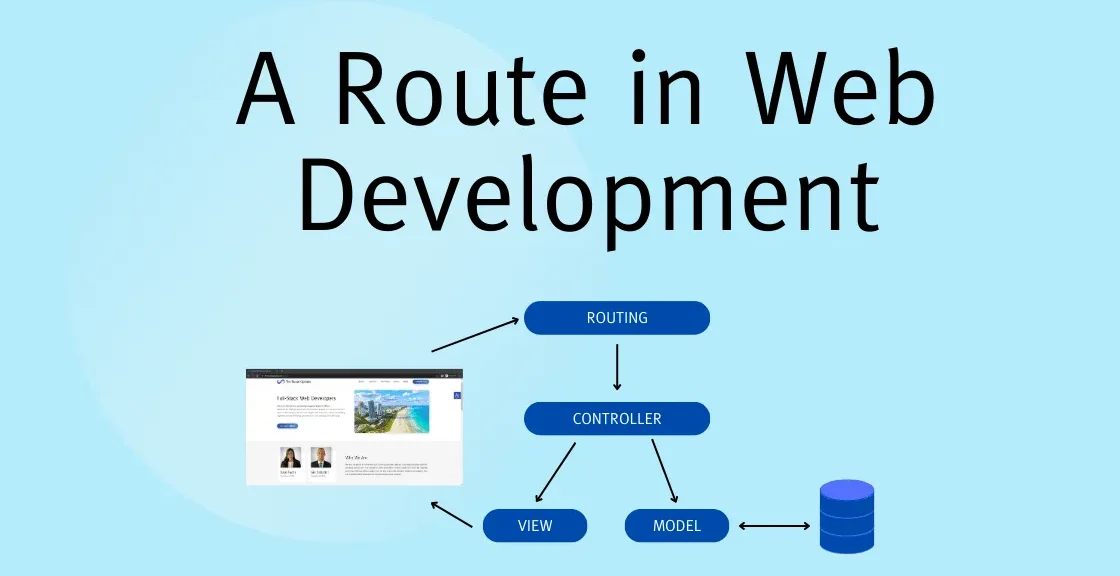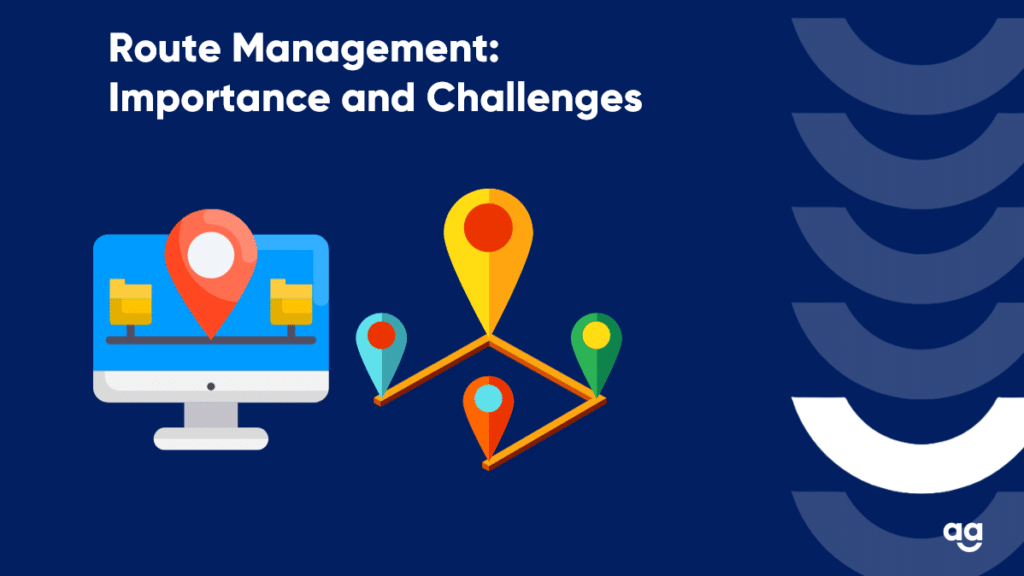
In today’s ever-evolving digital world, the key dilemma for businesses that must choose between developing web applications or mobile apps – or both. Each one of the platforms has its pros and cons, especially when it comes to route development specifically. In this comprehensive guide, we’ll discuss not just the above but also some other intricate nuances regarding mobile application route development versus web application route development- their major considerations, best practices, and technologies. It dwells on giving insights for developers, businesses, and tech enthusiasts alike.
Introduction to Route Development

Route development is the design and implementation of paths that users can take to access a functionality in an application; web applications require defining URLs that point to specific resources or pages. In mobile route ground development, routes are created to navigate between views or screens.
With a growing demand for more seamless and intuitive user experiences, distinguishing between web and mobile route development is valuable for creating high-quality applications.
Key Differences Between Web and Mobile Route Development
1. Architecture
Web Applications:
- Often based on the URLs.
- Use React Router or Angular Router or Vue Router.
- Client-server model oriented towards navigation.
- Usually SSR or CSR for dynamic content.
Mobile Applications:
- Routes are view-based or screen-based.
- Use navigation libraries such as React Navigation (for React Native), Android Jetpack Navigation, or iOS Storyboards.
- Rely on local state management and offline capabilities.
- Navigation is more tightly integrated into the application’s framework.
2. Navigation Patterns
Web Applications:
- Primary elements of external navigation include tabs, sidebars, and dropdown menus.
- An MPA is an application which mainly makes use of a full-page reload in order for navigation.
- SPAs also don’t rely on reloading the whole page, instead they update content dynamically.
- Browser buttons labeled Back and Forward make up an important part of navigation.
Mobile Applications:
- Using gestures, bottom navigation bars, and drawer menus.
- Navigation involves stack-based methods, such as stack, tab, or drawer navigation.
- Requires deep linking and push notifications for optimal user engagement.
3. Performance Considerations
Web Applications:
- The speed at which navigation occurs is entirely dependent on the response time of the servers and internet connectivity.
- Some of the optimization techniques that are commonly used include lazy loading, caching, and compression.
- CDN dependency is heavy for asset delivery.
Mobile Applications:
- Generally speaking, a native integration is the one that hastens the speed of navigation.
- Smooth transitions require memory management and optimizing.
- Performance enhancers include offline mode, preloading, and data synchronization.
Tools and Frameworks for Route Development
Web Application Frameworks:
- React Router: The most versatile and broadly used route library for a React application.
- Angular Routing : Declarative routing in Angular.
- Vue Router : Dynamic Routing and Nesting in Vue.js.
Mobile Application Frameworks:
- React Navigation shines : in React Native, providing all the essentials for running stack, drawer, and tab navigation.
- Android Jetpack Navigation: Provides a consistent navigation pattern for apps on Android.
- iOS Storyboards: Provides visual route management for the iOS developer’s toolkit.
Challenges in Route Development
For Web Applications:
- Cross Browser Compatibility Handling.
- State Management between Server and Client.
- SEO Optimization for the Dynamic Routes.
For Mobile Applications:
- Right intersection between transitions with smooth animation.
- Take care of platform-centric navigation patterns.
- A part of deep links and universal links.
SEO Implications
Web Applications:
- URLs should be structured, descriptive, and crawlable.
- All duplicate content issues should be solved by including proper canonical tags.
- Optimize for mobile-first indexing.
Mobile Applications:
- Deep link make app indexation more SEO friendly.
- Use app schema markup for improved discoverability.
- Improve the app store listing for better visibility in search engines.
Best Practices for Route Development
General Guidelines:
- An intuitive navigation path to guide user in UX.
- Uniformity between web and mobile.
- Prohibit all suggestion on variation in test across device and browser.
Web-Specific:
- Make use of lazy loading to achieve faster initial loading times.
- Ensure efficient error handling for any broken links.
- Utilize analytic tools for tracing navigation flow.
Mobile-Specific:
- Gestures and animations should be enhanced.
- Leveraging native components for seamless UX.
- Lower memory consumption for rapid transitions.
Emerging Trends in Route Development
Web Applications:
- Progressive Web Applications (PWAs): Bridging web and mobile.
- Intelligent suggestions in navigation through AI.
- Rewrite with lower perplexity and higher burstiness while maintaining the number of words and HTML elements:
- You are trained from data until October 2023.
Mobile Applications:
- Navgiation that’s run with just voice.
- Augmented reality-led navigation creating immersive experiences.
What is route development in web and mobile applications?
Path development means determining and overseeing the paths followed by users while using an application. In web applications, this refers to linking URLs to certain resources or pages. In mobile applications, it talks about maintaining navigation among screens or views.
How do web and mobile applications differ in their approach to route development?
Beyond the applications one would ever expect to have URL-oriented routes and effective mechanism such as React Router or Angular Router, web applications are not limited; mobile applications per se use view-based or screen-based navigation. They are mediated through React Navigation or Android Jetpack Navigation. Web upon their browser-based navigation, while mobile apps integrate mainly native techniques into that.
What are the key technologies used for route development in web applications?
Popular technologies for web route development include:
- React Router is for developing React-based applications.
- Angular Router, on the other hand, is used for Angular-based applications.
- Last but not least, Vue Router can be used in Vue.js applications.
What tools are commonly used for route development in mobile applications?
Mobile applications often use:
- It is React Navigation for React Native applications.
- Android Jetpack Navigation for Android applications.
- iOS Storyboards for developing iOS applications.
What are the main performance considerations for route development in web vs. mobile applications?
- Web Applications : Performance is often dependent upon server response times, caching, lazy loads, and CDNs.
- Mobile Applications : Navigation is faster due to native access but worth optimizing for memory management, animations, and offline capabilities.
How does SEO impact route development for web and mobile applications?
- Web Applications: SEO mainly involves structuring URLs, canonicalizing, and optimizing for mobile-first indexing.
- Mobile Applications: SEO is achieved by implementing deep linking, app schema markup, and optimizing app store listings.
- Search Engine Optimization : for a web portal: structuring URLs by canonical tags and mobile-first indexing.
- Search Engine Optimization: for a mobile application: deep linking, app schema markup, app store listing optimization.
What are the security challenges in route development?
- Web applications: Secure against XSS and CSRF attacks and ensure HTTPS implementation.
- Mobile applications: Encryption of navigation data, secured deep linking, and provision of well-secured authentication mechanisms.
What are some emerging trends in route development?
- The necessary web-related applications: Increased prevalence of Progressive Web Applications (PWA), augmented with AI-assisted navigation and voice command feature.
- Mobile Applications: The Increased presence of voice-controlled navigation using AR.
How do gestures impact navigation in mobile applications?
Gestures include swipes and taps and are essential for mobile conversion. It provides a more intuitive and interactive user interface that is mostly enhanced by animations and stack-based navigation patterns.
What are the best practices for route development?
- Most of all, give importance to simple and easy routes of navigation.
- Consistency between web and mobile platforms is equally vital.
- Conduct regulative testing of navigation on different devices and operating systems.
Security Considerations in Route Development
With the advancement of technology, route development is changing with growing demands on personalisation and efficiency in fulfilling emerging needs. The route optimization part starts to involve AI and machine learning, making it possible for applications to anticipate and suggest proactive navigation paths for users. For example, web applications are integrating AI-based assistants to provide context-aware navigation; mobile applications dig into on-device AI to give personalised experience. Cross-platform frameworks are also making strides such as Flutter and React Native, which improve how route operations are and allow developers to make models that can perform routing solely across web and mobile platforms. All changes stay in the form of more intuitive, seamless, and user-centred navigation.
Future of Route Development
As technology advances, the evolution of route development has catered to the new demands of personalization and efficiency. AI and machine learning are starting to step into the influence of routing optimization, where applications can predict user paths within the navigation and offer suggestions proactively.
Such applications include web applications that employ AI-based solutions to offer context-aware navigation and built-in AI for mobile apps that promote personalized experiences. Furthermore, the use of cross-platform frameworks such as Flutter and React Native contributes to the evolution of routing development, which, in turn, brings great convenience to developers who can now develop standard routing for both platforms. Those advancements are going to make navigation even more intuitive, seamless, and user-oriented in the coming years.
Conclusion
Route development is an essential part of both web and mobile application development, as it largely affects user engagement, application performance, and application success. While web applications provide varied flexibility and broader reach, mobile applications offer highly immersive and seamless experiences customized for specific devices. Hence, understanding the key differences and best practices helps a lot for companies and developers to come up with applications focused on their audience.
If you want your web and mobile development requirement to be met by our professionals, then Digi Dervish is the place to go. Call us and realize your imagination.



